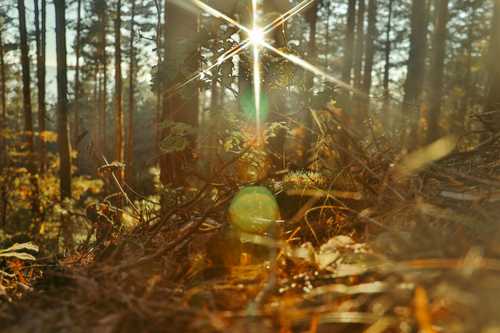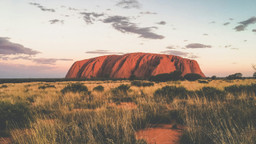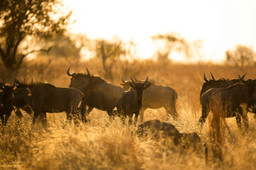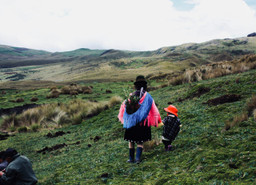
Why Indigenous people are so important for conservation
Seeing the natural world as deserving of respect and protection is a new one to modern legal systems. (Read more in our article on Earth rights.) In contrast, this way of seeing the world is fundamental to Indigenous worldviews.
For this reason, Indigenous peoples are crucial to the conservation of a natural world embattled by pollution, exploitation of resources, and damaging changes to land and sea use.
What does it mean to be Indigenous?
The United Nations describes this self-defined identity as one held by those who maintain “a historical continuity with a given region prior to colonization and a strong link to their lands”. In addition, languages, beliefs, and knowledge are “distinct from those of the dominant societies in which they live”, and are characterized by a determination to preserve them.
In noting that Indigenous people comprise “a non-dominant sector of society”, the UN also identifies the precarity of Indigenous peoples’ lives, and the consequent precarity of their ability to protect the natural world.
Though estimates of the number of Indigenous individuals vary between 370 and 500 million, this figure amounts for less than 10% of the global population. Nevertheless, this number is spread across more than 5,000 groups in 90 countries; as such, Indigenous peoples represent the majority of human cultural diversity, as well as speaking and having created 4,000 of the world’s almost 7,000 extant languages.
Examples of Indigenous groups include the Hmong people (in East and Southeast Asia), Aborigines (who likely have the oldest continuous culture on Earth; Australia), Sámi (northern parts of Norway, Sweden, Finland, and the Russian Kola Peninsula), Inuit (Arctic and subarctic regions), San (southern Africa), Cherokee (USA), and Guaraní (South America).

Like other minorities, in a world where might seems to equal right, Indigenous peoples are often refused “control [of] their own development”, and allowed little or no access to social services or political representation. This frequently takes the form of a lack of consultation in regards to projects or administrative and legislative rulings which may directly affect them, and displacement from ancestral lands (often so that damaging extractive ventures can take place there).
As a result of their marginalization, Indigenous peoples:
- Constitute around “19 percent of the extreme poor” (despite making up such a small proportion of the global population)
- Commonly experience “other human rights violations”
- Often do not have ownership of their lands and natural resources formally recognized by those in power; even when ownership is acknowledged, “protection of boundaries […] are often inadequate”
- May be the “last to receive public investments in basic services and infrastructure”
- Experience various obstacles to participation in the formal economy.
Such entrenched “inequality and exclusion” has created a disproportionate vulnerability to epidemics, and to climate change-induced extreme weather.
As a result of these and other factors, Indigenous peoples’ life expectancy may be up to 20 years shorter than that of non-Indigenous peoples.
How are Indigenous people protecting the natural world?
Around a quarter of the surface of the planet is managed by Indigenous people, or under tenure rights to them – and these areas are “in better environmental shape than most of the rest of the world”. Clearly, non-Indigenous peoples have much to learn.
This makes Indigenous people stewards of 80% of Earth’s remaining biodiversity, across more than a third of “the world’s most important places for biodiversity”. More specifically, tropical and subtropical forests protected by Indigenous people (along with local communities) have been shown to hold at least a quarter of all the above-ground carbon stored in these habitats – a far greater quantity than was realized as little as 10 years ago.
These statistics show that “[I]ndigenous communities have mastered how to live alongside nature in a way that other communities have not”. This includes crucial ancestral understandings of “how to adapt, mitigate, and reduce climate and disaster risks”.
Many Indigenous groups maintain a fundamental connection with the natural world, where humans and nature are “equal and interdependent”. New Zealand’s Māori people, for example, use the word kaitiakitanga to refer to protecting the environment “in order to respect the[ir] ancestors and secure the future”. It is this outlook, so contrary to extractivist consumerism, which makes indigeneity increasingly seen as crucial for safeguarding the environment.
In addition to acting as stewards for the land and its ecosystems, Indigenous peoples also:
- Embody a repository of knowledge crucial for environmental conservation and protection, developed through their survival in frequently demanding situations, “over literally thousands of years and [which has become] deeply embedded in their cultures”
- Possess expertise in small-scale community food production systems which “preserve rich biodiversity [crucial for sustainability], provide nutritious food and are climate resilient and low carbon” – knowledge from which the rest of the world can benefit
- Take action against climate change simply through the use of their traditional practises; for example, in Northern Australia, the volume of carbon-emitting wildfires was halved by the re-introduction of the controlled forest burning traditionally practiced by Indigenous peoples there
- Encourage biodiversity; a 2023 report from the World Economic Forum, ‘Embedding Indigenous Knowledge in the Conservation and Restoration of Landscapes’, found that almost half of all “endangered mammals live on land owned and protected by Indigenous people”, while “the richness of animal and plant life” on these lands is equivalent to that of protected nature reserves. This includes deforestation on Indigenous lands occuring at rates of 17 to 26% lower than elsewhere, due to their frontline guardianship.
How and why are Indigenous peoples oppressed?
In spite of the importance of Indigenous stewardship during the current environmental polycrisis, these peoples continue to experience persecution and oppression. Or, more accurately, they experience these things exactly because their pro-environmental stances oppose the extractive industries with which mainstream politics is aligned and complicit.
Across the world, Indigenous peoples stand against “[the imposition of developments] from beyond their communities”, such as illegal encroachments onto their lands, deforestation and logging, mining, and the damming of rivers. This makes them enemies of the industrial complexes which drive and stand to gain from these projects.
Global Witness (an international NGO which holds governments and companies to account for the interconnection of “natural resources, conflict and corruption”) states that “[Earth] [d]efenders and their communities are exposed to an ever-evolving range of reprisals, many of which are hidden from view. Or worse, ignored.”
Since the organization began to report the murders of earth defenders, in 2012, more than 2,000 people have been killed. One hundred and ninety-six were murdered in 2023 alone. Twelve percent of the victims were women; 43% were Indigenous people.
Continuing an established pattern, 85% of these murders took place in Latin America (primarily in Colombia, where the highest number of killings has taken place between 2012 and 2023 – specifically in regions where a combination of organized crime, “coca cultivation, drug trafficking and armed conflict” have wreaked havoc).
Of course, the murders that have been counted (and not gone unreported or been covered up) create a ripple effect which spreads far beyond the direct victims, whose names Global Witness has compiled: they also speak to a culture of violence and intimidation, which, in an uncountable way, will – as intended – silence other voices. Earth defenders also face abduction (in some cases carried out by or on behalf of governments, such as in the Philippines) and enforced disappearance (“‘arrest, detention, abduction’ or other ‘deprivation of liberty’”), which may leave families and loved ones in an indefinite state of uncertainty.

A continued increase in anti-protest legislation leveled against even peaceful climate activism is also part of this systematic, intimidatory movement to suppress dissent – in this case, by criminalizing it. The Marlin gold mine in Guatemala, “one of the earliest documented cases of a transnational corporation – and its state allies – weaponising the legal system against environmental defenders”, was constructed in an Indigenous municipality, “without proper consultation, environmental safeguards or economic benefits for local communities”. (More detail on ‘How Criminalisation Is Being Used to Silence Climate Activists Across the World’ here.)
What destructive practises do Indigenous peoples face?
Among the most common actions which Indigenous people oppose are:
Deforestation
This may occur for the purposes of logging for fuel or building materials, mining, or farming (with the accompanying air pollution and contamination of water).
In just 30 years, between 1990 and 2020, forests worldwide were reduced by 178 million hectares – an area equivalent to that of Libya (the 16th largest of the almost 200 countries in the world).
Not only do forests provide habitats for high numbers of plant and animal species, and have a crucial role to play in the alleviation of climate change through their storage of terrestrial carbon, for Indigenous people, forests are sources of food, medicinal plants, and livelihood. For this reason, deforestation pushes Indigenous groups “into poverty and dependency […], thereby escalating social and economic inequality”.
Because Indigenous peoples’ ways of life may be so inextricably linked to their lands, these places have a significance that transcends the physical, encompassing “spiritual and cultural practises, and well-being”. Forests, therefore, are sites of “spiritual activities, traditional practises, and the passing on of information”. This means that deforestation doesn’t only destroy material environments: it also violently depletes cultural identity itself, meaning that “sacred sites, rituals, and close connections with nature are destroyed [irreparably]”.
In addition, as detailed in Earth.fm’s ‘Could Conserving Biodiversity Limit Future Pandemics?’, by bringing humans in contact with disease reservoirs which would not otherwise, deforestation fuels the spread of zoonotic diseases which jump from animals to humans. Forests act as “natural barriers” to this effect, so their removal further endangered these groups’ “resilience and general well-being”.
Expulsion and land seizures
Due to the lack of robust legal protections, Indigenous groups frequently fall victim to land seizures by “governments, corporations and local elites” wishing to profit from the natural resources these sites hold, to grow crops or farm livestock, “or simply [to] hold [them] for speculative purposes”.
Even seemingly positive initiatives can have had injurious effects. By conserving 17% of the world’s terrestrial regions and 10% of its coastal and marine areas, Aichi Biodiversity Target 11 of the UN Convention on Biological Diversity seeks to “safeguard […] both habitats and populations of species and [allow them to continue] delivering important ecosystem services”.
Though deforestation has been reduced in these areas, it has been done so at the cost of the expulsion of Indigenous peoples from their ancestral lands (in spite of the effectiveness of their stewardship), creating the same hardships for them that deforestation itself would. These expulsions have frequently been accompanied by “human rights violations […] including violent threats and even killings by state troops and other groups”.

What is the future of Indigenous peoples’ role in conservation?
Indigenous peoples continue to experience, often at the hands of state power. However, some progress has been made in recognizing the importance of their knowledge and custodianship in this field, and of their rights to their ancestral lands and resources. (And, indeed, the right to live in isolation.)
As Cameron Saul, CEO of Bottletop (a luxury fashion brand that makes upcycled and sustainable products inspired by Indigenous communities), says of Indigenous people in the Amazon: “These aren’t just people who happen to live [there]. They’re one and the same. And it’s their innate relationship of reciprocity with the rainforest that enables it to flourish and that enables it to survive.”
This sentiment is reflected in the way that the rights of indigeneity have been set out in documents including the United Nations Declaration on the Rights of Indigenous People, and, over the last 30 years, recognized “in the policies of governments and the strategies of conservation organizations”.
Nevertheless, both Indigenous people and the environments they protect remain precarious.
To further support Indigenous wellbeing and enable their stewardship, their poverty must be reduced, for example through increased land tenure security, stronger governance, and investment in “culturally appropriate service provision”.
Current initiatives also seek to include Indigenous peoples in discussions around “just and sustainable global trade” and environmental policy discussions, [where] researchers have consulted Indigenous Peoples during the process of forming recommendations”. For example, the Transformative Pathways project is working in various countries “to develop indicators that evidence the vital role that Indigenous Peoples and local communities play in the conservation and sustainable use of biodiversity”.
Approaches which acknowledge that endangered ecosystems can be best protected “by empowering and involving [I]ndigenous populations” are crucial for Indigenous peoples’ continued safety and vital custodianship of the natural world.
Featured photo by Mladen Borisov on Unsplash
Earth.fm is a completely free streaming service of 1000+ nature sounds from around the world, offering natural soundscapes and guided meditations for people who wish to listen to nature, relax, and become more connected. Launched in 2022, Earth.fm is a non-profit and a 1% for the Planet Environmental Partner.
Check out our recordings of nature ambience from sound recordists and artists spanning the globe, our thematic playlists of immersive soundscapes and our Wind Is the Original Radio podcast.
You can join the Earth.fm family by signing up for our newsletter of weekly inspiration for your precious ears, or become a member to enjoy the extra Earth.fm features and goodies and support us on our mission.
Subscription fees contribute to growing our library of authentic nature sounds, research into topics like noise pollution and the connection between nature and mental wellbeing, as well as funding grants that support emerging nature sound recordists from underprivileged communities.

